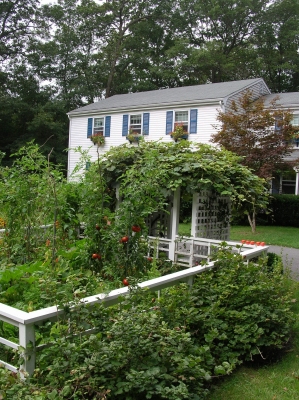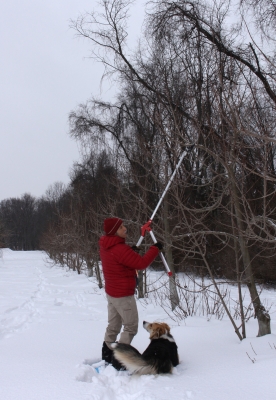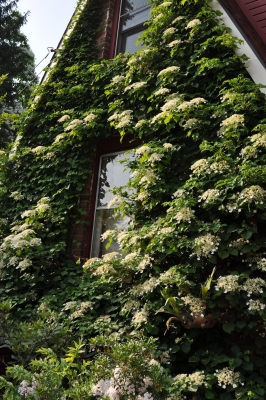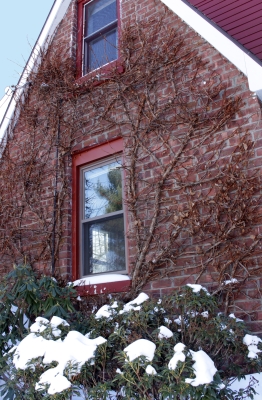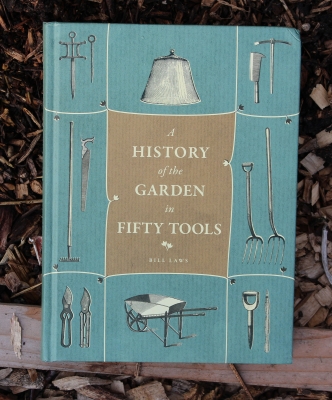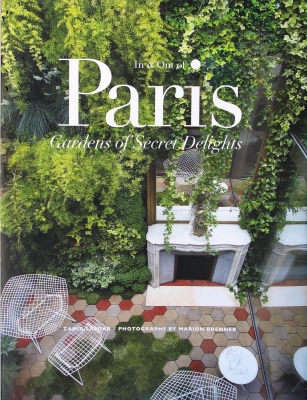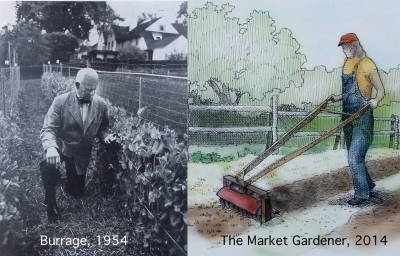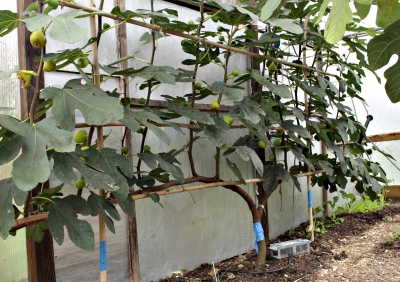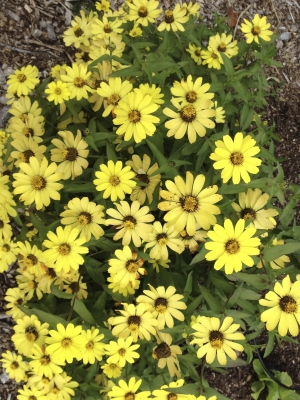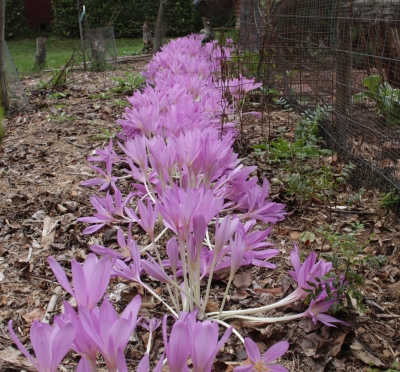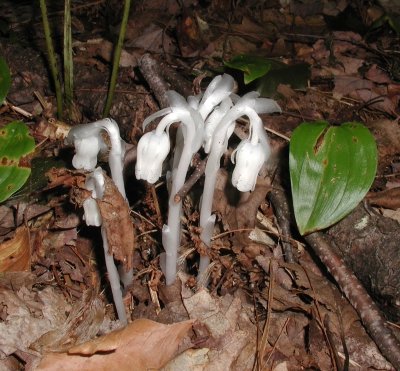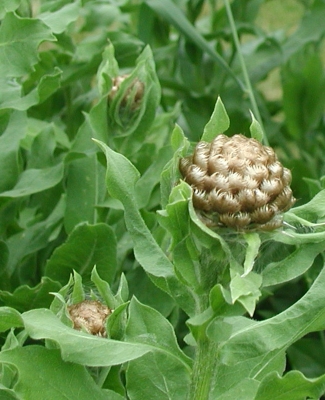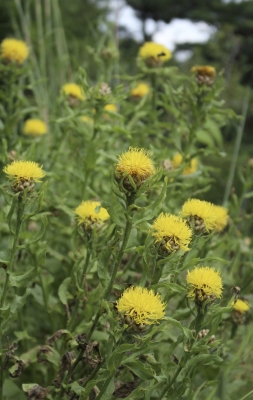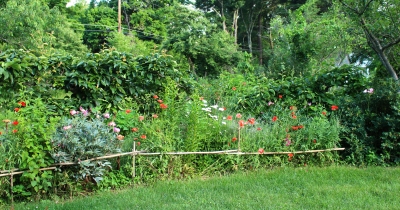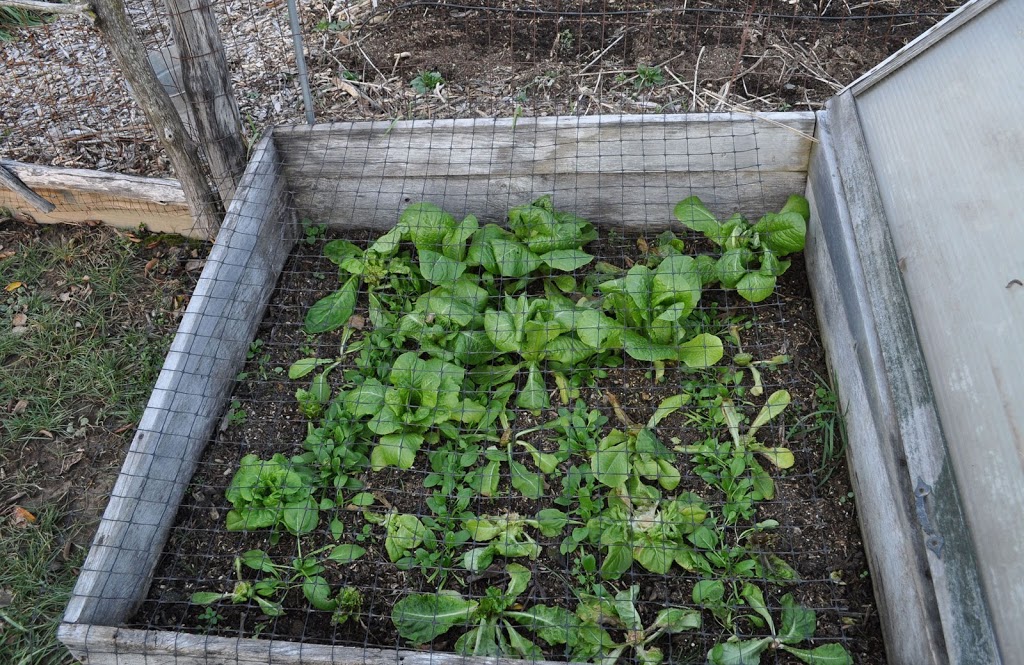MAYPOP & ASPARAGUS, BEAUTIFUL & EDIBLE
Awesome, Made More So
You would think — or I, at least, would think — that a purple and white passionflower would be more passion-inducing than one that was merely white. Not so. The white one displays a passionate juxtaposition between a pure, lily-whiteness and a wildness from the the squiggly, threadlxike rays of its corona backdropping female stigmas’ that arch over the yellow pollen-dusted anthers.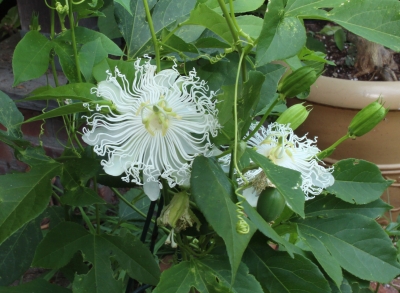
A white passionflower is a rarity. Mine sprung up by chance from a batch of seeds I planted last year. Mostly the plants bear purple and white flowers.
Most passionflowers are tropical, but this white-flowered passionflower, like its mother and siblings can survive outdoors even with our winter lows of well below zero degrees Fahrenheit. Commonly known as maypop, Passiflora incarnata is native to eastern U.S. as far north as Pennsylvania. Tropical passionflowers, are woody perennial vines; maypop is an herbaceous perennial vine, dying back to the ground each fall, but sprouting each spring from its perennial roots.
 Vine growth begins late, typically not showing until early June here in the Hudson Valley. Summer warmth coaxes it along to begin flowering in July. Once the flowers appear, they continue almost nonstop through the summer until fall, with one to a few new flowers opening each day.
Vine growth begins late, typically not showing until early June here in the Hudson Valley. Summer warmth coaxes it along to begin flowering in July. Once the flowers appear, they continue almost nonstop through the summer until fall, with one to a few new flowers opening each day.
Fruits soon follow the flowers. Yes: Fruits! Passionfruits are delicious, and maypop fruits taste pretty much the same as tropical passionfruits — the main flavor in Hawaiian punch, in case you think you’re unfamiliar with the fruit. The fruit is egg-shaped, its interior packed full of seeds, each of which is surrounded by a thick coat of deliciousness, in much the same way as pomegranate seeds.
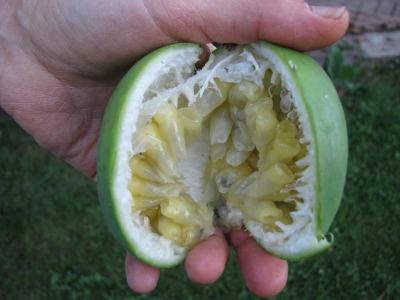 I haven’t figured out where to plant my maypops, so they’re still in large pots. Years ago, I had a couple in the ground at the base of a lilac tree. The maypops climbed into the lilac to put on a show through summer, after the lilac itself was no longer interesting. Now I want a fence for it to clothe in a heat-capturing spot in full sunlight. Maypop does spread underground, to the extent that it’s considered a weed in the Deep South, where it really can run wild. Spread is less here, but still, I need a location for it that takes that potential into account. Alternatively, I’ll plant it in a deep, bottomless container, such as a chimney flue.
I haven’t figured out where to plant my maypops, so they’re still in large pots. Years ago, I had a couple in the ground at the base of a lilac tree. The maypops climbed into the lilac to put on a show through summer, after the lilac itself was no longer interesting. Now I want a fence for it to clothe in a heat-capturing spot in full sunlight. Maypop does spread underground, to the extent that it’s considered a weed in the Deep South, where it really can run wild. Spread is less here, but still, I need a location for it that takes that potential into account. Alternatively, I’ll plant it in a deep, bottomless container, such as a chimney flue.
The Other Kind of Passion
If truth be told, the “passion” that gave passionflowers their name refers to a religious passion, the passion of Christ. The plant was a seventeenth-century teaching tool for spreading the gospel.
Passionflower “had clearly been designed by the Great Creator that it might, in due time, assist in the conversion of the heathen among which it grows,” wrote a Christian scholar of the seventeenth century. The ten so-called petals (botanically, five petals and five petal-like sepals) were taken to represent the ten apostles present at the crucifixion. The threadlike rays of the corona were taken for symbols of the crown of thorns. The five stamens and three styles referred, respectively, to the five wounds of Christ and the three nails used in the crucifixion. Even the rest of the plant figures in, with the three-lobed leaves representing the Trinity and the tendrils representing the scourges. 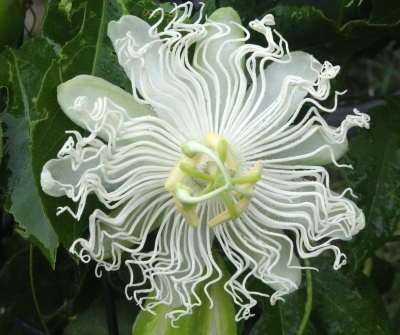
Passionflowers are heavenly enough to bring on a religious devotion to growing the plants. Which brings us to sex . . . The flowers are andromonoecious, which means that on every plant some flowers are perfect (have functioning male and female flower parts) and some are functionally male. Functional males have female parts but are functionally male either because their stigmas are held upwards out of the way of insect visitors or because their female parts are atrophied. So grow two plants if insects are to do your bidding, one plant if you’ll take care of pollination.
See my book Uncommon Fruits for Every Garden for more — a whole chapter! — on hardy passionfruits.
“Sparrowgrass” Need Help
My asparagus is now a six-foot-high, ferny hedge outside and along the eastern edge of one of the vegetable gardens. It’s a pretty sight until my eyes drop downward to see the weeds sprouting at the “hedge’s” feet. Not that the weeds are putting the brakes on the asparagus, but they are making seeds that then spread into the vegetable garden.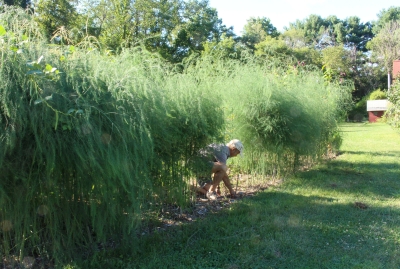
I’ve seen gardens and farms where asparagus beds were abandoned because of weeds. Mulching and early season weeding only go so far.
The usual recommendation for growing asparagus is to purchase roots and plant them at the bottom of a deep trench. As new shoots grow, the trench is gradually filled in with soil.
More recent research showed that such heroic efforts were unnecessary. I planted my asparagus just deep enough to get them into the ground.
The reason for trenching asparagus was to get the crowns low enough so that a tiller or hoe could be used to kill weeds without damaging the crown. All of which is impossible when the crowns are planted with their buds just beneath the surface.
So these days I’m periodically crawling into the hedge, becoming very intimate with the ground there, and pulling out all the weeds.

